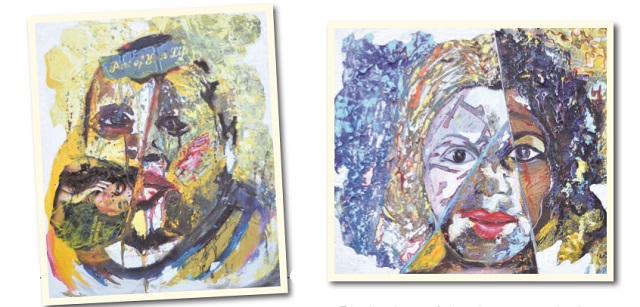
Rukundo’s goes under the skin of colour perceptions
Skin bleaching treatments are a global phenomenon. They are common in the Caribbean, Middle East, Asia, South America, and several African countries including Rwanda. Rwanda visual artist Baptiste Rukundo is among those who see a dark side to using lightening products.
This is the central theme of his month long exhibition that started on June 03 at Concept Arts Studio at Kacyiru in Kigali.
Rukundo is exhibiting 40 pieces of paintings, 11 of which are exclusively dedicated to skin bleaching. During a recent discussion with a group of artists attended by The Independent, the artist observed that the global concept of beauty today appears to be dominated by eurocentric standards.
“There’s a false belief that light-complexioned women are more attractive and acceptable to men,” he said. “Over time, women who are dark skinned and have internalised this false perception tend to lighten their skin to enhance their sense of self-worth. The other reasons are peer pressure and ignorance.”
If art is a powerful medium to criticise the ugly and the ignoble, Rukundu succinctly displays his angst against this practice through a prodigious use of brushstrokes in different styles and forms. The artworks on display are of mixed media, including water colors and acrylic on canvas.
Most of the untitled pieces showcase different split faces of women-and men, who have bleached juxtaposed with their natural unspoiled faces. The deft use of color is employed to show the negative consequences of bleaching: creation of ugly grotesque faces as opposed to their natural faces.
Black is beautiful is always a catch phrase used to show the beauty of being black. But the distortion of this is markedly shown in his art pieces. In one 60×50 acrylic on canvas piece, Rukundo paints a woman with a split face. The left half side of the face is a typical natural beauty of an African woman, black and unsoiled, with natural short black hair and black eye.
However, the other half is that of a woman who looks grotesque after bleaching, with her “white” face, blue eyes and fake hair distorting her beauty. At some point, there’s a shade of black skin amid her artificial face to show a “guinea fowl” effect, as described by Okot p’Bitek in his Song of Lawino.
The second piece of the same measurement draws the same theme, with a split face of a woman. This one shows a woman who has added another concept of beauty through the heavy use of a red lipstick on her lips, which sharply contrast with her face. The other half is that of the African beauty in her African black skin.
A mixed media 50×60 piece portrays a man who has bleached. Using magazine cuttings of a white woman which promotes skin bleaching products, and the split face of a man to show bleaching gone wrong, Rukundo powerful message against this European concept of beauty of light skin is beautiful is artistically explored and powerfully criticised.
“Why should I feel uncomfortable in my natural black skin? And you find that this false belief has also caught on celebrities who should be society’s role models. Skin lightening products is a big industry, fuelled by the media and marketing gimmicks, though some of them have also proved to be unsafe,” says Rukundo.

****
 The Independent Uganda: You get the Truth we Pay the Price
The Independent Uganda: You get the Truth we Pay the Price





